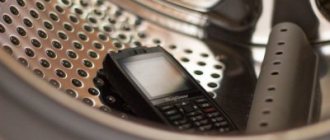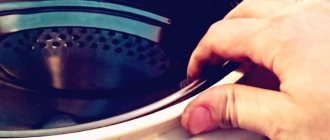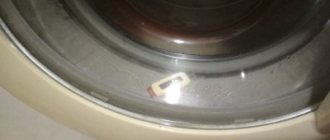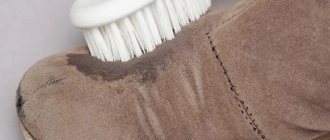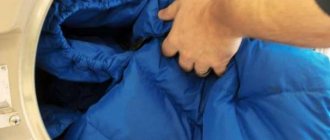If you forgot your bank card in the washing machine without going through your pockets, the first question you will ask yourself is will it work now? It all depends on the type of card, the duration and intensity of the wash, and the speed of response to the problem.
Let's figure out what to do if you washed a card in an automatic machine.
Accidentally washed my bank card
Technological progress does not stand still. If earlier we mistakenly threw things with passports and driver's licenses into the wash, now we wash plastic cards, automatic car key fobs and mobile phones. And it’s not surprising - a small piece of plastic, you won’t always notice it and you’ll hardly remember it at home. Of course, a damaged card is not the biggest tragedy in life, but it does cause some inconvenience. A natural question arises: is she “alive”? And if not, what to do then?
How to minimize possible damage
Everything here is banally simple:
- If you immediately remember that you forgot your bank card, then, without waiting for the wash cycle to complete, try to turn off the washing machine and take out the item;
- If you find plastic after finishing the wash:
- take out the card;
- wipe dry;
- dry (do not use a hair dryer, heater, iron or other devices for drying);
- check for scratches.
You will be lucky if the card was washed at low temperatures and was in a trouser or jacket pocket.
What happens if you wash your bank card?
The banking industry has excellent financial opportunities to keep up with progress, and therefore most often offers us advanced technologies. This also applies to plastic cards, which contain quite resistant polyvinyl chloride. This means that it is almost impossible to lose or damage the plastic itself during the washing process. But the card is equipped with “brains” - information carriers in the form of a magnetic tape or a chip (often combined: tape + chip). And it is precisely this information carrier that is the weak link of any card - high temperatures, sharp objects and a humid environment can cause irreparable damage to it.
Will the credit card work after getting wet?
If the Sberbank card was made of high-quality plastic, then even washing will not affect its further operation.
The product can continue to be used in cases where:
- the banking product is made of high-strength material;
- it has a protective film that protects it from damage and scratches;
- it is equipped with a magnetic stripe that is rarely exposed to external influences;
- During washing, the product was not in the drum of the machine, but inside the trousers or shirt.
In the described cases, the probability of maintaining the functionality of the plastic card is 70%. If during washing it was not inside any item, but in the drum of the machine, then the risk of damage increases to 50%.
If the plate already had any damage or defects before washing, then after washing the likelihood of the product failing increases many times over.
If you wash a bank card, what happens to it?
Since it is unlikely that anything can happen to the plastic itself, we will consider in more detail the effect of washing on a poorly protected storage medium, based on its type:
- Magnetic tape. The main enemy of information integrity is a magnet, high temperatures and sharp objects. There is no magnet in the washing machine, the main washing temperature is -30-40 degrees (not critical if you do not set the laundry to a boiling program), but there is a risk of damage to other things while moving in the drum. Conclusion: the first thing you need to do is check the integrity of the tape after washing (statistics: in more than half of the cases the card will be “working”).
- Chip. More technologically advanced, but also more “sensitive” - most often it does not tolerate the washing process due to the penetration of liquid into the carrier.
In any case, the functionality of the card will need to be checked, so it is recommended to check its viability at the nearest ATM, terminal, or simply at the checkout counter in a store. 2-3 checks are enough and you can make an accurate diagnosis of washed plastic.
Is there a difference between hand washing or machine washing?
Yes, there is a difference between types of washing to preserve plastic. The most important factor is that hand washing does much less harm than machine washing. And there are a number of reasons for this:
- By hand, plastic is easier to notice among things, so there is a chance to remove it faster and minimize the risk of damage.
- Wash by hand - most often means less aggressive detergents, as well as lower temperatures.
- The plastic does not come into contact with the metal drum during washing.
You also need to keep in mind: if the card is accidentally exposed to water during hand washing, then you just need to blot it with a rag and let it dry. After some time, you can already use it as usual.
What to do if the card still gets damaged?
So, the situation has become clearer - the card did not survive the wash? This means we go to the branch of the credit institution that issued the plastic (don’t forget your ID). You will need to write and submit to the manager an application for early re-issue of plastic, indicating the reason for the need for such a procedure. The manager will provide up-to-date information about the need (or lack of need) to block accounts on the old card, about the possibility of choosing a new card and account - all that remains is to make an acceptable choice. The funds from the card account will not go anywhere (except for the amount of the commission for re-issuance), because you can link a new plastic card to your previous account or open a new account for this. The cost and time (usually 3-14 banking days) of re-issuing plastic are individual and depend on the issuing bank, which means it is more logical to familiarize yourself with this information in advance.
Action plan
If there are no noticeable mechanical damages visually observed on the product, then it is enough to put it in order.
To do this you need:
- Wipe the plate with a dry cloth. Allow the product to dry completely.
- Check the banking product again for damage. This is especially true for the place where the magnetic stripe or chip is located.
- Check the legibility of the inscriptions and numbers on the map.
- Check the functionality of the card on the terminal. Insert it and make sure that the device “reads” it normally. Try entering your password, checking your balance, and performing some kind of operation just to be safe.
When trying to return a deformed card to its previous shape, do not heat it too much. High temperatures can cause plastic to become even more deformed.
If there is noticeable damage on the plate and the terminal cannot read the necessary information from it, then it must be replaced.
To do this you need:
- Go to the bank. You need to contact the department that issued the plate.
- Take with you to the bank not only your card, but also your passport.
- Submit an application to the bank branch requesting early re-issue of the product. Indicate in the document the reasons for the failure of the plastic. Be sure to indicate the date and signature on the application.
- Return the damaged card to the bank employee for destruction.
- Get a new card from the same bank. In this case, the current account and number remain unchanged.
It takes about two weeks to reissue a card, but this period can be reduced to one week. At the same time, Sberbank does not charge a commission for this operation. The bank usually notifies you that the card is ready via SMS.
What commission is required for re-issuing a card?
You need to understand that the responsibility in this case lies with the card owner - after all, it was he who did not keep track of the plastic - which led to its damage. Therefore, the cost of reissue is reimbursed by the culprit of the precedent - the card holder. The fee for re-issuing plastic is individual and directly depends on the servicing bank, so it is better to familiarize yourself with the tariffs in advance. An interesting feature is that while debit cards are reissued for a certain commission (from 30 to 1500 rubles), credit cards are most often free of charge.
Effective methods for restoring the original appearance of washed banknotes
It is important to process washed money correctly. There are several ways to help restore the normal appearance of paper bills and coins
They involve drying and eliminating the smell of mold.
How to dry it properly?
The most common method is drying between clean sheets of paper. To this end, you should perform the following steps:
- First, carefully lay the banknotes on a terry towel and cover the top with another towel or soft rag. This will remove most of the moisture.
- After this procedure, each bill should be carefully spread out on a sheet of paper, covering the top with the same one.
- Place a book on top of the second sheet (to prevent deformation of the banknote).
- As the paper sheets become damp, they should be replaced with new ones until the money is completely dry.
The method is quite effective, but time-consuming. There are other equally effective measures to restore washed money.
Iron drying
It is recommended to dry money while smoothing it with an iron on an ironing board. The algorithm of actions is as follows:
- lay down a clean soft cloth, carefully placing wet bills on it;
- cover the top with the same fabric;
- Having set the iron to the minimum temperature setting for any type of fabric (cotton, wool, synthetics), you should carefully iron the fabric surface until it is completely dry and the paper money is restored.
Drying coins is much easier. They must be rinsed under running water and laid out in one layer on a soft cloth.
Drying with a hairdryer
You will have to hold the banknote with one hand and direct the warm jet of a hairdryer onto it with the other. Using hot air will dry the money paper quickly, but forced drying often results in warping.
Before such drying, preliminary preparation will also be required, including removing moisture with a towel. This procedure is described above.
On a rope
This method will also give positive results for drying banknotes. But it has disadvantages:
- the use of clothespins will cause the ends of the banknote to break;
- when suspended, banknotes curl and become deformed;
- In the end, you will still have to resort to using an iron.
Of the methods described above, ironing washed money is the fastest and most effective. After this procedure, they will acquire their original condition and payment status.
How to get rid of mold?
Removing mold from coins is not difficult. They can be washed in water with the addition of bleach or vinegar. Another method involves using any detergents and cleaning products used when treating a bathtub or sink. In both cases, after this procedure, it is recommended to rinse the coins under running water and dry them.
Mold that appears on banknotes after accidental washing in a machine is more difficult to remove. To eliminate fungal infection, you can use the following proven methods:
- Wipe banknotes with a detergent containing chlorine. To do this, apply a small amount of liquid to a cotton pad and wipe the money with it. Then remove the product with a damp cloth.
- Vinegar diluted in water fights mold well. The ratio of components is 1 part vinegar to 5 parts water. The banknotes should be wiped with a cotton pad and dried with this mixture.
- A more aggressive, but most effective treatment of paper money against mold is immersion in cold water with the addition of liquid soap, shampoo or shower gel.
It is not recommended to soak paper money in any solution for more than 30 seconds, as it may get wet.
FAQ
What should I do if I washed my Sberbank card, how much will it cost to replace it?
If you have unsuccessfully washed your Sberbank card, you can order a reissue of the card either in person in the office or through the Sberbank Online system, and the cost of the procedure directly depends on the status of the plastic. So, the simplest options (social or youth) will cost 30 rubles. Reissuing cards in the mid-price segment will cost 60-250 rubles. For gold and platinum cards, in most cases there is a free reissue.
What to do if the magnetic tape on the plastic is damaged?
You must visit the branch of the banking organization that issued the card (don’t forget your ID) and write an application for early re-issuance of the plastic card, indicating the reason. The manager will provide the necessary information about the need to block the account on the old card, about the possible choice of a new card and account - all that remains is to make the right choice. The cost and time of re-issuing plastic are individual and directly depend on the issuing bank, which means it is more foresighted to familiarize yourself with this information in advance.
My bank card was in the washing machine, how can I open it while washing?
Since at the moment the majority of the population uses an automatic machine for washing, information about the fight against this particular unit will be relevant. We do not consider options for disconnecting from the network - the electronic content of the equipment may not withstand it and fail. In a top-loading machine, everything is simple - the doors open even while the mechanism is running, but we don’t risk it with our own hands - we turn off the rotation of the drum, open the door and take out the card. A front-loading machine will not allow the door to be opened while the program is running. Therefore, we stop the washing program, switch to the water draining program, after executing this command, the machine will unlock the door, and it will be possible to get plastic that has been refreshed after water procedures.
A few final words
Don’t want to find yourself in a similar unpleasant situation associated with getting wet and then replacing many bank cards? Then don't forget to check the pockets of bags, transport cases, jackets, jackets, shirts, trousers and jeans before washing. Remind your husband and children of the same.
If, nevertheless, the bank card ends up with wet things, try to remove it as quickly as possible, wipe it and put it in a dry place. If a plastic item has become damaged, do not panic, but contact your bank branch as soon as possible. Write an application for reissue and carefully follow the instructions of the people from the financial institution.


